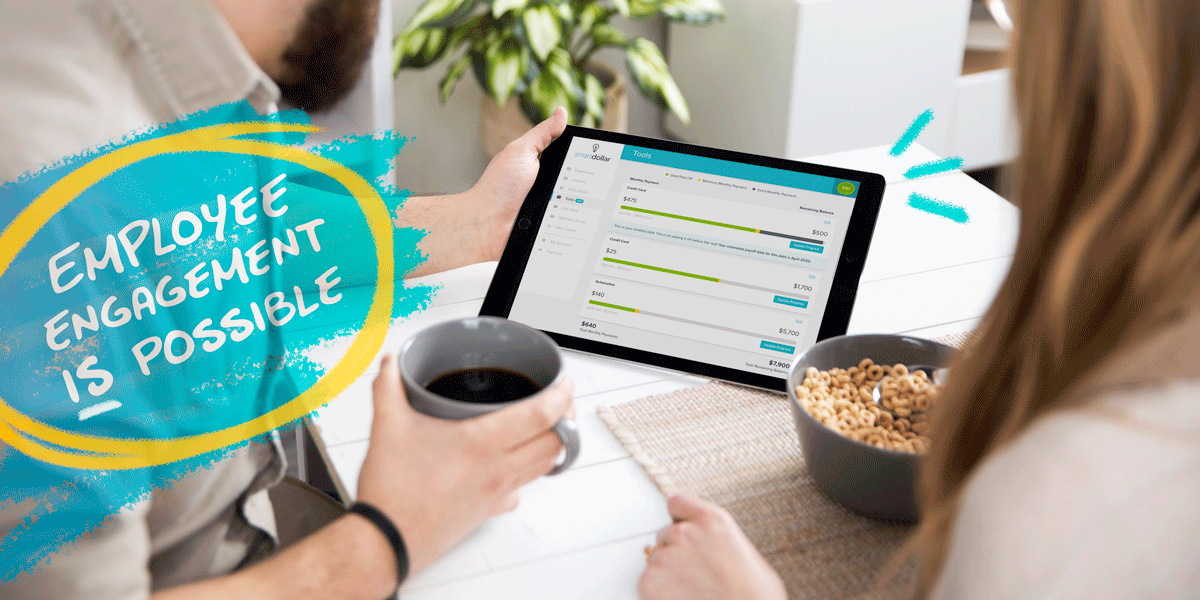If you’re anything like most HR decision makers or small business owners, you’ve probably had your share of obstacles and worries about how new programs will go over. You know that old familiar feeling. Everyone is on board, and you’ve used every available method to make sure it’s promoted well to your team. The start date is set. But despite all your preparation, one thought keeps haunting you. . .
Will they engage?
We’ve all been there! And if you’ve ever launched a program that didn’t catch on with employees as much as you’d hoped, you especially know what we’re talking about.
Well, we have great news for you: Employee engagement is possible. But first, let us frame it up for you. It’s not what you might have thought.
Myth #1: Enrollment Means Engagement.
If you’ve bought into this myth, don’t beat yourself up —it’s pretty popular in the HR world. At some point in our careers, most of us have fallen into the belief that signing people up should be the top priority for getting employees engaged with company benefits. But if you think about it, it’s obviously not enough. After all, no matter how lovely the engagement ring, putting it on your finger doesn’t mean you’re married; nor does registering for a new program directly cause anything big to happen in your employee’s life.
Fact: Enrollment Means Nothing Unless It’s Followed by Action Steps.
Joining a gym, saying yes to emails, or creating a user account that gives you access to new information—these are all great first steps. But until an employee starts doing some reps or reading some articles, nothing about their finances is going to change. So if you’ve been settling for mere enrollment, it’s time to push for something more.
Myth #2: We Know They’re Engaged Because They’re Using All the Videos and Tools!
To give credit where it’s due—if you’re proving engagement by relying on data or word of mouth to determine if employees are using videos, apps or tools, you have gone further than those who are satisfied with high enrollment. But you still need to go much further! Listen, we’re huge fans of convenient tools, inspiring content and informative videos. In fact, we’re busy creating all of these things and more to help employees with financial wellness. But if it doesn’t lead to real and lasting behavior change around money, it’s not going to get them over the finish line.
Fact: Written Budgets, Completed Quizzes or Video Views Alone Don’t Guarantee Financial Progress.
To put it bluntly, reading every book ever written by all the smartest money experts in the world still means nothing if readers don’t make the move to get out of debt. Persuading them to make budgeting a monthly habit or convincing them of the importance of having an emergency fund won’t be enough either. Those are the key areas of financial behavior where most of your employees could use a lot of inspiration and encouragement. And unless your financial wellness program is helping them affect some serious behavior change, it is failing, and your employees are not truly engaged with the program’s primary message.
Myth #3: There’s No Practical Way to Measure Engagement and Behavior Change With a Benefit.
Even if you agree that just signing up or using a program are insufficient to prove engagement, you may still buy into another common myth: it’s hard or impossible to measure engagement the way we define it in terms of behavior change. Here’s the truth!
Fact: Your Company Can Get Reliable Reporting on How Your Team Is Progressing Financially (and You Really Need It).
At SmartDollar, we’ve found that behavior change is measurable. Through our behavior change reporting, you can see your team’s total turnaround with budgeting, emergency funds, video lessons and debt payoff.
Click here for free, SHRM-accredited webinar content on all things HR and business leadership.
And the personalized dashboard and engagement points make SmartDollar a dream for employees who like visuals of their progress with ongoing metrics including: action steps completed, lessons learned, total debt paid off, total dollars saved and overall financial turnaround. Would you believe that after only one year in the program, the average SmartDollar user typically sees a financial turnaround of over $16,200?! That's over $10,000 of debt paid and $6,200 saved!
To see how bringing SmartDollar can make a lasting impact for your employees and for your organization, set up a demo today!


